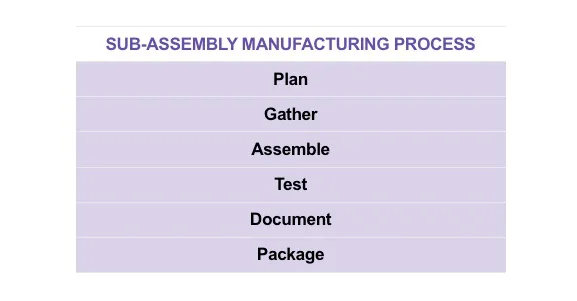Last Updated on June 16, 2025

Thinking About Mexico? Here’s Where to Begin
So, you’re considering manufacturing in Mexico. You’ve run the numbers, looked at the logistics, maybe even flown down to tour a few facilities. It all makes sense—lower costs, proximity to the U.S., trade benefits under the USMCA. But now comes the real question: How do you get started? The truth is, there’s no single path to setting up shop south of the border. Some companies go big with wholly owned operations. Others test the waters with a contract manufacturing partner. The good news? There are proven strategies for manufacturing in Mexico that match different needs, budgets, and timelines.
Let’s walk through them—no jargon, no fluff, just the kind of real-world guidance you wish someone had given you from day one.
Strategy #1: The Shelter Model (Your Shortcut to Speed and Simplicity)
This one’s a favorite among companies that want to avoid the bureaucratic maze. The shelter model lets you operate in Mexico without setting up a legal entity there.
Think of it like renting a fully staffed, fully compliant business structure. Your product, your process—but under someone else’s regulatory umbrella.
It cuts your startup timeline down to just a few months, and minimizes your risk. No need to wade through labor laws, tax compliance, or customs red tape. Concentrate on making great stuff.
NovaLink, for example, helps brands scale in Mexico under this model without skipping a beat. That’s especially useful if you're trying to beat long lead times in Asia.
The Six Types of Mexico Shelter Companies
Are you aware that there are six types of shelter companies, each with advantages and disadvantages?
Contract Manufacturing Shelter
A Contract Manufacturing Shelter is ideal for companies that want to manufacture in Mexico without setting up a legal entity. You'll partner with a local contract manufacturer, who produces your products to your specifications. This type of shelter company is appropriate for businesses that want to test the Mexican market or need temporary manufacturing capacity.
Joint Venture Shelter
A Joint Venture Shelter involves partnering with a local Mexican company to create its own legal entity. This type of shelter company is suitable for businesses that want to share risks and rewards with a local partner. This is done by leveraging their expertise and knowledge of the Mexican market.
Wholly Owned Subsidiary Shelter
A Wholly Owned Subsidiary Shelter allows you to establish a fully owned Mexican subsidiary, giving you complete control over your operations. This type of shelter company is ideal for businesses that want to integrate Mexican operations into their global strategy.
Free Trade Zone Shelter
A Free Trade Zone Shelter operates within a designated free trade zone in Mexico, offering duty-free imports and exports, as well as other tax benefits. This type of shelter company is suitable for businesses that import and export goods regularly.
IMMEX Shelter
An IMMEX shelter is a special program that allows you to temporarily import goods and materials duty-free, as long as they're re-exported or transformed into a final product. This type of shelter company is ideal for businesses that need to import goods for assembly or manufacturing. IMMEX shelters are better suited for companies that wish to manufacture in Mexico long-term and partner with a company like NovaLink.
Service-Based Shelter
A Service-Based shelter provides administrative and operational support, such as human resources, accounting, and logistics, allowing you to focus on your core business activities. This type of shelter company is suitable for businesses that want to outsource non-core functions and streamline their operations.
Strategy #2: Contract Manufacturing (When You Want Control Without Commitment)
Let’s say you’re still figuring out demand, or you don’t want to lock into real estate or equipment yet. Contract manufacturing gives you flexibility.
You hand over the production to a local partner, and they handle everything—from sourcing materials to assembling your product. You pay per unit or per batch.

This setup is perfect if you’re testing your product, scaling up fast, or just want to focus on marketing and sales. This is instead of building an entire factory from scratch.
But here’s the catch: not all partners are created equal. Vet them carefully. Ask about past clients. Visit the facility. And make sure that your communication is sharp—language and time zones matter more than you’d think.
Strategy #3: Joint Ventures (When You Need Boots on the Ground and Skin in the Game)
Some companies want more than just a supplier relationship—they want a true partner. That’s where joint ventures come in.
You partner with a Mexican company and form a new entity together. You share resources, risks, and profits.
It’s a smart move if you’re entering a regulated sector or need local knowledge to navigate supply chains and talent pools.
But joint ventures are like marriages: they work with trust, transparency, and a shared vision. Misaligned goals or poor governance can drag both sides down.
Strategy #4: Wholly Owned Subsidiaries (When You’re All In)
This is the go-big-or-go-home play. You form your own Mexican corporation, buy the land, build the facility, hire your team, and run the show from top to bottom.
If you’re planning to produce at scale for the long haul and want maximum control, this is your route.
The upside? You shape the culture, control every cost, and own every asset.
The downside? It takes time. It takes money. And it requires serious commitment to get everything right—especially in compliance and HR.
Still, many global brands go this route once their Mexican operations mature. It’s not a quick win, but it’s often sustainable.
The advantages of wholly owned maquiladoras are in the areas of control and cost savings. In most cases, vertical integration through complete ownership will save money for a company in the long run. Complete ownership also ensures total control over foreign operations, making it easier for the parent company to regulate quality standards and environmental compliance. This structure also avoids the transition from shelter operator to wholly owned subsidiary, a transition almost certain to occur if manufacturing in Mexico continues. As such, a long-term commitment to Mexican manufacturing is critical and the foreign company must be ready to engage in “hands- on” management of the Mexican plant. - US Company For Mexican Operations
Strategies for Manufacturing in Mexico: Which One’s Right for You?
Here’s the thing: The right strategies for manufacturing in Mexico depends on you.
- Are you just exploring nearshoring? Try contract manufacturing.
- Want to scale fast but skip the headaches? The shelter model’s calling.
- Need deep roots and high volume? A wholly owned subsidiary makes sense.
- Looking for local synergies? A joint venture would be your bridge.
And don’t forget—these aren’t rigid lanes. Many companies start with one model and evolve as their needs shift. That’s the beauty of it. Manufacturing in Mexico isn’t one-size-fits-all.
It’s more like finding the right gear for the terrain you’re on right now—and being ready to shift when the road changes.
Conclusion: It’s Not Just Where You Make It—It’s How
Choosing Mexico is smart. But, choosing how to enter Mexico? That’s what sets you up for long-term success.
There’s no need to gamble or guess. Use what works. The right strategy balances control, cost, speed, and sustainability—and the right partner can help you make it happen.
Whether you’re assembling electronics, stitching apparel, or building automotive parts, remember this: Mexico manufacturing strategies aren't just about logistics—they’re about building a smarter, more resilient business from the ground up.
The shelter model with a nearshore partner like NovaLink is often the quickest. You can begin production in as little as 3–4 months without setting up a legal entity.
FAQs on Strategies for Manufacturing in Mexico
Do I need to incorporate in Mexico to manufacture there?
Not necessarily. You can operate under a shelter provider or contract manufacturer without incorporating, depending on the model you choose.
Is manufacturing in Mexico cheaper than in Asia?
In many cases, yes—especially when you factor in shipping costs, tariffs on Chinese goods, and shorter lead times. Labor rates remain competitive.
Can I change my entry strategy later?
Absolutely. Many companies start with contract manufacturing or shelter services and transition to full ownership once they’ve validated the market.
What industries benefit most from manufacturing in Mexico?
Automotive, aerospace, textiles, electronics, and medical devices are top contenders—thanks to skilled labor, proximity to the U.S., and strong infrastructure.
Explore More: Discover Related Blog Posts
Expand your knowledge and delve deeper into more information found in our Manufacturing in Mexico Guide with our curated collection of related blog posts.
- Why Mexico Isn’t a Perfect Manufacturing Solution (and What That Really Means)
- Mexico Rewards Manufacturing Companies That Commit: Here’s Why
- Stop Waiting: Mexico Product Manufacturing Is Ready When You Are
- Mexico’s Customs Clearance: Why It’s Faster—and Smarter—for Manufacturers
- Setup Process for Manufacturing in Mexico: What You Should Know About Timelines, Permits, and Common Pitfalls
About NovaLink
As a manufacturer in Mexico, NovaLink employs a unique approach that transcends the traditional model of shelter production. More than just the location of your manufacturing, we would like to become a partner in your manufacturing in Mexico. You will be able to relocate or initiate manufacturing for your company in Mexico in a low-cost labor environment with very little delay or up-front costs. Find out how we can help you by handling the manufacturing process.
There are NovaLink facilities in the border cities of Brownsville, Texas, Matamoros, Mexico, and Saltillo, Mexico.